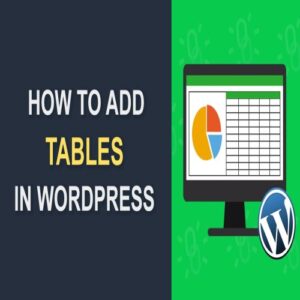In today’s digital world, Google is the go-to search engine for finding information, products, and services. When you type a query into Google, you see a mix of organic and paid search results. Knowing these types of differences can help you optimize your online presence effectively. Let’s dive into what separates organic and paid search results and how to use both to your advantage.
What Are Organic Search Results?
Definition and Nature
Organic search results are the listings you see on Google that appear because they are relevant to your search query. These results are determined by Google’s algorithms and are not influenced by payments.
How Do Organic Search Rankings Work?
Google uses a complex system to rank these results. Here are some key factors:
- Relevance: How well a page’s content matches the search query.
- Keywords: The presence and strategic use of relevant keywords.
- Quality Content: Informative, original content that provides value.
- Backlinks: Links from other reputable websites pointing to your page.
- User Experience: Factors like site design, mobile-friendliness, and page speed.
- Engagement Metrics: How much time users spend on your page and how often they click through.
What is SEO?

Search Engine Optimization (SEO) is the process of improving your website to increase its visibility in organic search results. This involves optimizing content, improving site architecture, and building high-quality backlinks. Effective SEO is a long-term strategy that helps drive sustained traffic to your site.
Benefits of Organic Search Results
- Trust and Credibility: Users trust organic results more because they are seen as unbiased.
- Cost Efficiency: Organic traffic is free, though SEO requires time and resources.
- Sustainability: High-ranking pages can maintain their positions for long periods, continuously driving traffic.
What Are Paid Search Results?
Definition and Nature
Paid search results, also known as pay-per-click (PPC) ads, are the listings that businesses pay to appear at the top of the search results. These results are marked with “Ad” and can be found above, below, or alongside organic results. Google Ads is the main platform for managing these paid placements.
How Do Paid Search Ads Work?
- Bidding System: Advertisers bid on keywords they want their ads to show up for.
- Quality Score: Google rates ads based on relevance, expected click-through rate (CTR), and landing page experience. Higher quality scores can reduce costs per click (CPC).
- Ad Rank: The combination of the bid amount and quality score determines the ad’s position on the page.
Benefits of Paid Search Results
- Immediate Visibility: Paid ads provide instant visibility at the top of search results.
- Targeted Advertising: Ads can target specific demographics, locations, times, and devices.
- Measurable ROI: PPC campaigns offer detailed analytics, allowing for precise performance tracking and strategy adjustments.
Challenges of Paid Search
- Cost: Continuous payment is required, and costs can add up quickly, especially for competitive keywords.
- Temporary Results: Traffic stops once the budget runs out, unlike the sustained traffic from organic results.
Comparing Organic and Paid Search Results
Visibility and Trust
Organic results generally earn more trust from users due to their perceived impartiality and the SEO process behind them. Paid results offer guaranteed top-of-page visibility, which is crucial for new businesses or time-sensitive promotions.
Cost and Investment
Organic search requires investment in SEO but incurs no direct costs per visitor. Paid search involves ongoing costs directly tied to clicks, making budget management essential.
Longevity and Sustainability
SEO efforts lead to long-term, sustainable traffic. Paid search results depend on the advertising budget and need continuous funding.
Targeting and Flexibility
Paid search offers greater flexibility in targeting specific audiences with precision, including demographics and locations. Organic search results rely more on broader appeal and relevance.
Integrating Organic and Paid Search Strategies
For the best results, many businesses use a combination of organic and paid search strategies. Here’s how you can make them work together:
- Short-term and Long-term Goals: Use paid search for immediate traffic and visibility, while investing in SEO for sustainable growth.
- Data Insights: Use data from PPC campaigns to identify high-converting keywords and apply them to your SEO strategy.
- Comprehensive Coverage: Ensure visibility across different types of searches by leveraging both organic and paid listings.
Conclusion
Understanding the difference between organic and paid search results on Google is crucial for effective digital marketing. Organic search results offer long-term credibility and cost-efficiency, driven by thorough SEO efforts. Paid search results provide immediate visibility and precise targeting, albeit at a recurring cost. By integrating both strategies, you can achieve a balanced online presence that maximizes the strengths of each approach.










